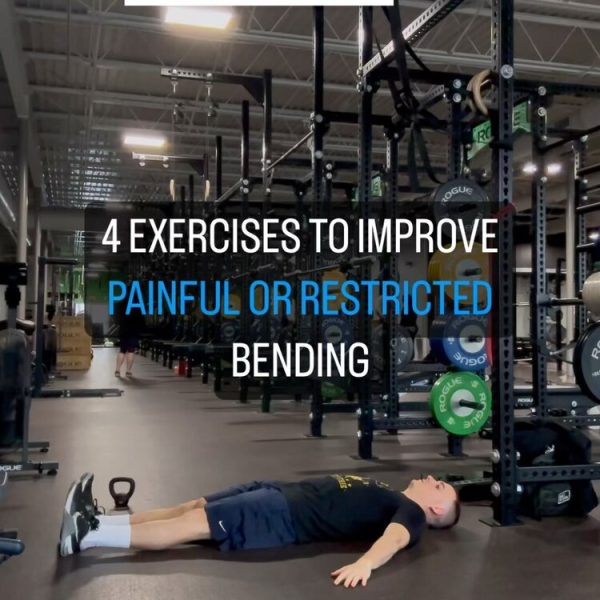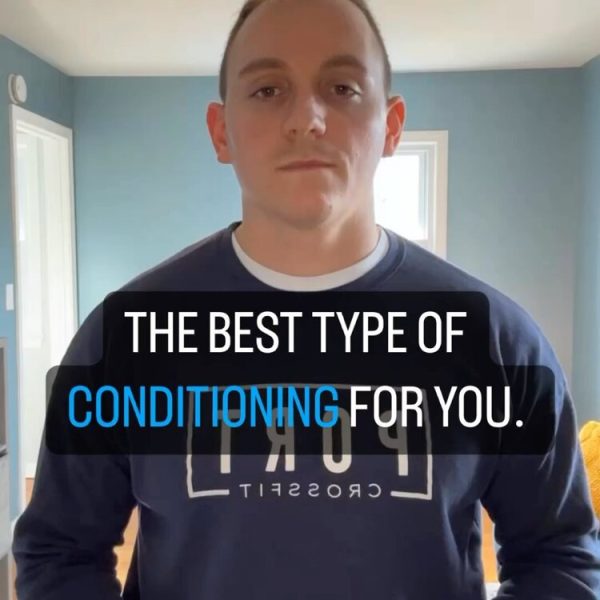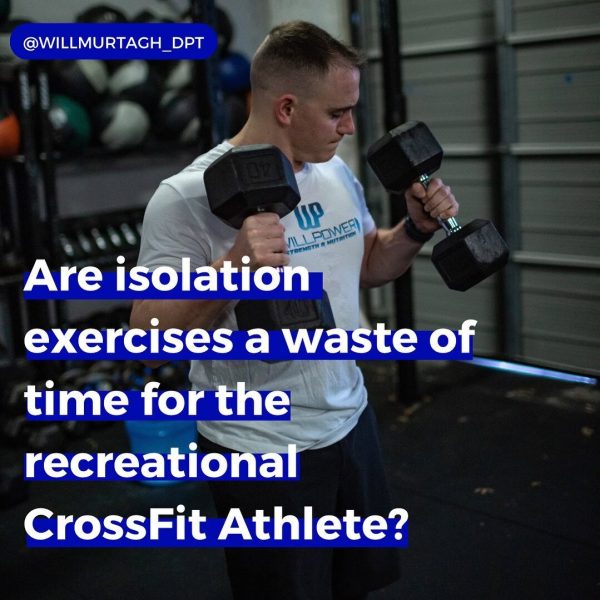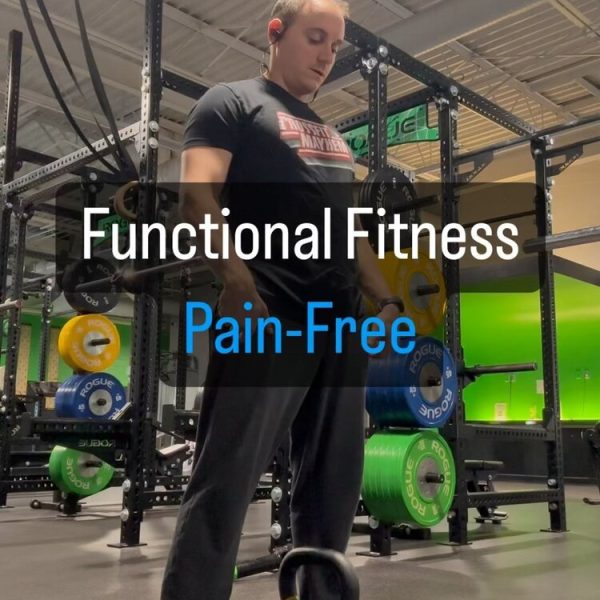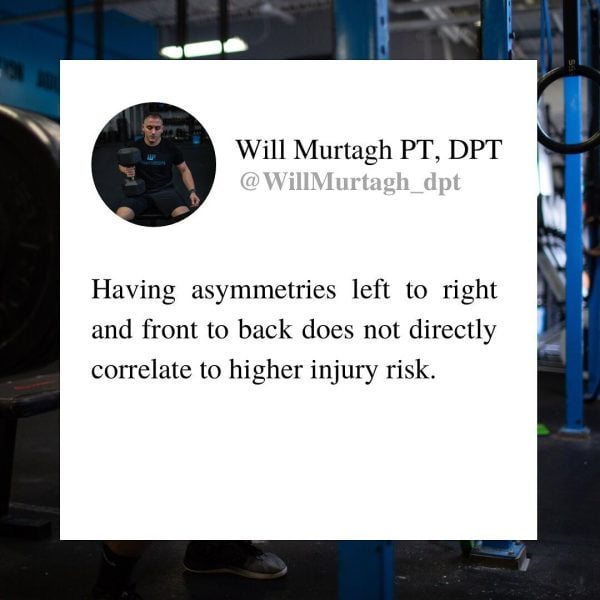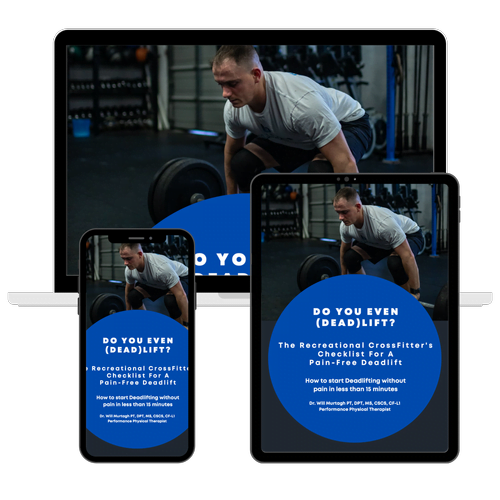Dr. Will Murtagh is a performance physical therapist and writer who helps Fitness Athletes elevate their fitness and train pain-free.
As an affiliate partner of various brands and sponsored content, WillPower Strength & Nutrition may earn a commission on qualifying purchases at no additional cost to you.
Related products to this Blog Post:
*Equipment needed for the exercises listed below*
SERTT Weight Cable Pulley System Gym
Let me guess, one day you woke up and for some weird reason, it is painful to lift your arm over your head or perform movements like Bench Press, Strict Press, or even Pull-ups. There is likely no identifiable instance where you can remember injuring your shoulder. You just began noticing your shoulder is hurting and has progressed from an annoyance to a serious pain preventing you from training or using your arm like you want to.
I hear this story all of the time as a Physical Therapist. This type of situation is often diagnosed as Rotator Cuff Tendinopathy. Rotator Cuff Tendinopathy is a Rotator Cuff injury characterized by inflammation, degeneration, and/or damage to the tendons of the rotator cuff muscles.
Rotator Cuff Tendinopathy is a couplet of shoulder injuries that can cause quite a bit of disability. I have been there myself and remember that in a matter of weeks, I went from being able to press heavy over my head and pull my body weight up over pull up bar to quite literally not being able to perform one push-up without significant pain in my shoulder.
Fortunately, through my training as a Physical Therapist and Strength Coach, I was able to rehab my Rotator Cuff muscles and return my shoulder to full strength and press without pain. Below I will be diving into Rotator Cuff Tendinopathy and how to treat it with various Rotator Cuff exercises just as I did so you can alleviate your pain and get back to full strength!
Prevalence
Rotator Cuff Tendinopathy is arguably the most common cause of shoulder pain. It is estimated that 30-50% of the general population will experience Rotator Cuff Tendinopathy at some point in their lives. In the general population, this prevalence rises significantly with age and is most common in individuals over 60.
It is even more common in athletes or people who train or have jobs that require repetitive overhead movements. Such as Baseball, Tennis, Swimming, and fitness athletes like CrossFit or Olympic Weightlifting. It is estimated that 40-90% of people who fall into this category with experience Rotator Cuff Tendinopathy at some point in their lives.
If you combine these two statistics, if you are over the age of 60 and you engage in any of the activities or something similar above. There is a good chance you will experience Rotator Cuff Tendinopathy at some point.
Fortunately like I did it can be rehabbed back to full strength.
The Role of the Rotator Cuff Muscles
The Rotator Cuff plays an important role in stabilizing the shoulder blade during overhead movements. Additionally, it is responsible for keeping the humeral head centralized on the Glenoid Fossa of the shoulder blade so the Rotator Cuff tendons do not become pinched between the bones of the shoulder joint as a result of superior translation during movement. Such as what occurs in Shoulder Impingement Syndrome.
A way to conceptualize how important having strong Rotator Cuff muscles are to avoiding painful shoulder movements is to envision a golf ball on a tee. This is actually what the bones of the shoulder joint or the “shoulder girdle” actually look like.
So, if you do not have normal function of the Rotator Cuff muscles, having malalignment of the humeral head and eventual Rotator Cuff injuries can be quite easy. Hence the high prevalence of shoulder pain.
The 4 Rotator Cuff Muscles of the shoulder blade
Below is a quick overview of the Rotator Cuff Muscles that act to stabilize the shoulder blade so that you know which ones I am referring to when I mention them for the rest of the article.
Supraspinatus
Most active during abduction of the shoulder
Infraspinatus
Most active during external rotation of the shoulder with the arm positioned at the side of your body
Teres Minor
Most active during external rotation of the shoulder with the arm positioned at shoulder height at a 90-degree angle
Subscapularis
Most involved with internal rotation of the shoulder, compressing the hand to the front of your body or lifting your arm off the back side of your body
Tendinitis vs Tendinosis
It is important to distinguish between the two categories of Rotator cuff Tendinopathy because they will require different approaches to treatment using strengthening. These two terms are very often used interchangeably, even by a health care provider such as a Physical Therapists. But, they are quite different based on what is occurring at the tendons of the Rotator Cuff Muscles.
Rotator Cuff Tendinitis refers to inflammation of the Rotator Cuff tendons due to an acute injury or overuse due to too frequent repetitive arm movements, poor management of training workloads or improper mechanics or posture during training.
You can learn more about designing an exercise program to treat posture with strengthening and various shoulder stretches by reading this blog post I wrote: The 20 Best Physical Therapy Exercises To Improve Posture.
Any instance of Rotator Cuff Tendinopathy that lasts between 1-3 weeks is often classified as Tendinitis and not tendinosis.
Rotator Cuff Tendinosis refers to the actual degeneration of the tendons of the Rotator Cuff Muscles and is often without significant inflammation. With Rotator Cuff Tendinosis, the degeneration that occurs is often associated with microtears, collagen disorganization, and tissue breakdown as a result of repetitive stress or aging.
Rotator Cuff Tendinosis is often the result of delayed treatment of Rotator Cuff Tendinitis. Thus, it is important to work with a Physical Therapist like myself or begin a program on your own to address these symptoms as quickly as possible.
Learn more about joining my 1:1 Pain-Free Performance Program today so you can get back to pain-free training and drop 15+ pounds in 90 days!
Signs and Symptoms of Rotator Cuff Tendinopathy
The signs and symptoms of both Rotator Cuff Tendinitis and Tendinosis are very similar. The main symptoms include inflammation of the tendons of the Rotator Cuff muscles, pain with overhead lifting, reaching behind your back, weakness in the shoulder and scapula, and a limited range of motion due to stiffness or pain.
If left untreated Rotator Cuff Tendinopathy can lead to more serious conditions such as a Rotator Cuff tear. This is why it is important to recognize these symptoms as soon as possible and see out care of a Physical Therapist as soon as possible to avoid further complications.
Using Strengthening to Treat Rotator Cuff Tendinopathy
Determining how to treat Rotator Cuff Tendinopathy states with an evaluation and then a systematic approach to treating it.
The framework that I use when treating Rotator Cuff Tendinopathy includes four phases: Assess Isolate, Stimulate, and Integrate.
Assess – The assessment is where I will have you move through the painful motions so I can see how the movement is performed.
Isolate – this includes evaluating for any range of motion limitations as well as strength deficits found in the Rotator Cuff Muscles.
Stimulate – this is where the actual therapeutic exercises of the individual Rotator Cuff muscles take place with an exercise program to strengthen any weak points found in the above two phases.
Integrate – this last phase is where you use your newfound strength and rehabilitated muscles into the once-painful motion using functional exercises.
The process of actually testing these muscles and ranges of motion can have its own article we will remain focused on the actual strengthening protocols in the stimulate and integrate phases after each group of muscles has been assessed and isolated.
Types of Muscle Contractions
Isometric Exercises
Isometric exercises are characterized by high amounts of muscle activation but are without actual shortening of the muscles. Thus, they are static exercises and no actual movement occurs. There are two types of Isometric Exercises: Yielding Isometric Exercises where you are trying to resist movement and Overcoming Isometric Exercises where you are attempting to move an immovable object such as trying to rotate your hand into a door frame.
Concentric Exercises
Concentric Exercises are what most people think of when exercising. Concentric exercises involve a shortening of the muscle and then a lengthening of the muscle with consistent speed throughout the motion. These types of muscle contractions are great for building all types of qualities such as motor control, strength, and endurance, and are effective for rehabbing both Rotator Cuff Tendinitis and Tendinosis but may not be the most effective for either
Eccentric Exercises
Eccentric Exercises are exercises where the load is lifted using a concentric muscle contraction but then is intentionally lowered at a slower rate than what would be typically seen in a concentric exercise. In this instance the Rotator Cuff muscles and lengthen at a slower rate as they fire and contract against the load and the pull of gravity.
For Rotator Cuff Tendinitis, you will want to begin with less damaging forms of strengthening exercises. This is because in this phase of Rotator Cuff Tendinopathy, there is quite a bit of inflammation and pain so the use of Isometric Exercises will allow for a gradual increase in strengthening intensity of the Rotator Cuff muscles without further increasing inflammation in the area due to the response of exercise. As well Isometric exercises are more easily modulated in intensity because the magnitude of the contraction is dictated by your mid-set and not the load you pick.
For Rotator Cuff Tendinosis, the treatment will mostly consist of Eccentric exercises as well as concentric exercises. The reason that Eccentric exercises are prioritized for Tendinosis is that Concentric Exercises are the most effective at restoring the resiliency of the Rotator Cuff muscles due to the increased time under tension and increased muscle breakdown due to lengthening under a load.
Some examples of exercises to include in your exercise program for each kind of muscle contraction are listed below. For many of them, all you need is a door frame or a cable column or resistance band.
Isometric Exercises:
External Rotation Into Door Frame
Internal Rotation Into Door Frame
Concentric / Eccentric Exercises:
Side Lying Dumbbell External Rotation
Elbow On Knee External Rotation
You can see that for Concentric and Eccentric Exercises they are the same however how you execute them will be different.
As I mentioned, the only difference between the two types of exercises is their speed and emphasis on a specific portion of the lift.
Any Concentric exercise can be turned into an Eccentric exercise by intentionally slowing down the portion of the exercise where you are lowering the weight to the midpoint of the exercise.
The final piece to treating Rotator Cuff Tendinopathy is to take this newfound strength and resiliency of your Rotator Cuff tendons and incorporate it back into functional exercises. Specifically, the overhead movements or horizontal pressing that caused your pain before beginning your strengthening protocol. Muscles rarely work in isolation and thus if you want to get back to training with heavy weights or performing your sporting activity without pain this is a crucial last step in the process.
There are many different ways to incorporate these Rotator Cuff exercises into an exercise program by manipulating repetitions, sets, weights, and the frequency at which you perform them.
I urge you to seek out and work with a Physical Therapist like myself to develop an individualized exercise program to help you resolve your shoulder pain and get back to training pain-free.
P.S. If you’re interested in leveling up your fitness and staying pain-free while you train, I can help. Just click 👉🏻 HERE and message me “Performance” to learn more.



